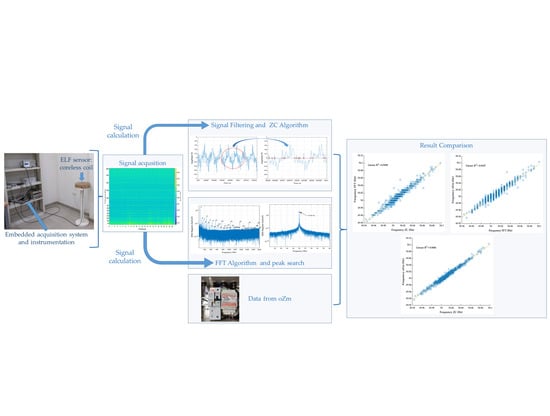Grid Frequency Measurement through a PLHR Analysis Obtained from an ELF Magnetometer
Abstract
1. Introduction
- 50 Hz ±1% (49.5 to 50.5 Hz) for 99.5% of the year;
- 50 Hz −6%/+4% (47 to 52 Hz) for 100% of the time.
2. Materials and Methods
2.1. Data
2.2. Frequency Measurement Methods
2.2.1. Zero-Crossing Method
2.2.2. FFT Method
3. Results and Discussion
4. Conclusions
Author Contributions
Funding
Institutional Review Board Statement
Informed Consent Statement
Acknowledgments
Conflicts of Interest
References
- Kufeoglu, S.; Pollitt, M.; Anaya, K. Electric Power Distribution in the World: Today and Tomorrow. EPRG-Camb. Work. Pap. Econ. 2018. [Google Scholar] [CrossRef]
- Wu, J.; Guo, Q.; Yue, C.; Xie, L.; Zhang, C. Special Electromagnetic Interference in the Ionosphere Directly Correlated with Power System. IEEE Trans. Electromagn. Compat. 2020, 62, 947–954. [Google Scholar] [CrossRef]
- Němec, F.; Parrot, M.; Santolík, O. Power line harmonic radiation observed by the DEMETER spacecraft at 50/60 Hz and low harmonics. J. Geophys. Res. A Space Phys. 2015, 120, 8954–8967. [Google Scholar] [CrossRef]
- Helliwell, R.A.; Katsufrakis, J.P. VLF wave injection into the magnetosphere from Siple Station, Antarctica. J. Geophys. Res. 1974, 79, 2511–2518. [Google Scholar] [CrossRef]
- Nunn, D.; Rycroft, M.; Trakhtengerts, V. A parametric study of the numerical simulations of triggered VLF emissions. Ann. Geophys. 2005, 23, 3655–3666. [Google Scholar] [CrossRef]
- Helliwell, R.A.; Katsufrakis, J.P.; Bell, T.F.; Raghuram, R. VLF line radiation in the Earth’s magnetosphere and its association with power system radiation. J. Geophys. Res. 1975, 80, 4249–4258. [Google Scholar] [CrossRef]
- Burke, C.P.; Jones, D.L. An experimental investigation of ELF attenuation rates in the Earth-ionosphere duct. J. Atmos. Terr. Phys. 1992, 54, 243–250. [Google Scholar] [CrossRef]
- Wang, Y.; Zhou, Y.; Cao, Q. Study of ELF propagation parameters based on the simulated schumann resonances. IEEE Antennas Wirel. Propag. Lett. 2014, 13, 63–66. [Google Scholar] [CrossRef]
- National Centers for Environmental Information. Geomagnetic Coordinates. Available online: https://www.ngdc.noaa.gov/geomag/WMM/icons/WMM2010_coor.png (accessed on 19 October 2021).
- García, R.M.; Novas, N.; Alcayde, A.; El Khaled, D.; Fernández-Ros, M.; Gazquez, J.A. Progress in the knowledge, application and influence of extremely low frequency signals. Appl. Sci. 2020, 10, 3494. [Google Scholar] [CrossRef]
- Xi, G.; Yang, Y.J.; Liu, K.; Zhang, X.H. Effect of extremely low frequency pulsed electric field based on plant potential fluctuations on growth of mung bean. Gaodianya Jishu/High Volt. Eng. 2012, 38, 199–204. [Google Scholar] [CrossRef]
- Wu, J.; Guo, Q.; Yan, X.; Zhang, C. Theoretical analysis on affecting factors of power line harmonic radiation. IEEE Trans. Plasma Sci. 2019, 47, 770–775. [Google Scholar] [CrossRef]
- Red Eléctrica de España. El Sistema Eléctrico Español. 2020. Available online: https://www.ree.es/sites/default/files/publication/2021/06/downloadable/inf_sis_elec_ree_2020_0.pdf (accessed on 10 October 2021).
- Zhang, C.; Ma, Q. Influences of radiation from terrestrial power sources on the ionosphere above China based on satellite observation. IOP Conf. Ser. Earth Environ. Sci. 2018, 153, 042002. [Google Scholar] [CrossRef]
- Amirkhanyan, M.; Bryukhan, F. Measurement errors of electromagnetic fields of industrial frequency in urban areas. MATEC Web Conf. 2018, 170, 02020. [Google Scholar] [CrossRef]
- Belyaev, I.; Dean, A.; Eger, H.; Hubmann, G.; Jandrisovits, R.; Kern, M.; Kundi, M.; Moshammer, H.; Lercher, P.; Müller, K.; et al. EUROPAEM EMF Guideline 2016 for the prevention, diagnosis and treatment of EMF-related health problems and illnesses. Rev. Environ. Health 2016, 31, 363–397. [Google Scholar] [CrossRef] [PubMed]
- Ahlbom, A.; Cardis, E.; Green, A.; Linet, M.; Savitz, D.; Swerdlow, A. Review of the epidemiologic literature on EMF and health. Environ. Health Perspect. 2001, 109, 911–933. [Google Scholar] [CrossRef] [PubMed]
- Persinger, M.A.; Forster, W.S. ELF rotating magnetic fields: Prenatal exposure and adult behavior. Arch. Meteorol. Geophys. Bioklimatol. Ser. B 1970, 18, 363–369. [Google Scholar] [CrossRef]
- Wertheimer, N.; Leeper, E. Electrical wiring configurations and childhood cancer. Am. J. Epidemiol. 1979, 109, 273–284. [Google Scholar] [CrossRef]
- Barker, A. The possible biological effects of low-frequency electromagnetic fields. Supplement to the Public Affairs Board Report No. 10 June 1994. IEEE Electr. Insul. Mag. 2002, 11, 27–31. [Google Scholar] [CrossRef]
- Lacy-hulbert, A.; Metcalfe, J.C.; Hesketh, R. Biological responses to electromagnetic fields. FASEB J. 1998, 12, 395–420. [Google Scholar] [CrossRef]
- WHO. Extremely Low Frequency Fields, Environmental Health Criteria Monograph No. 238; WHO: Geneva, Switzerland, 2007. [Google Scholar]
- Rachedi, B.A.; Babouri, A.; Xun, Z. Electromagnetic pollution inside high voltage substation. Rev. Roum. Sci. Techn. Electrotech. et Énerg. 2016, 61, 178–182. [Google Scholar]
- Tardón, A.; Velarde, H.; Rodriguez, P.; Moreno, S.; Raton, M.; Muñoz, J.; Fidalgo, A.R.; Kogevinas, M. Exposure to extremely low frequency magnetic fields among primary school children in Spain. J. Epidemiol. Community Health 2002, 56, 432–433. [Google Scholar] [CrossRef] [PubMed]
- Aris, A.; Yiannis, K.; Tyrakis, C.; Alkhorayef, M.; Sulieman, A.; Tsougos, I.; Theodorou, K.; Kappas, C. Extremely low frequency electromagnetic field exposure measurement in the vicinity of wind turbines. Radiat. Prot. Dosim. 2020, 189, 395–400. [Google Scholar] [CrossRef]
- Werner, S.M.; Rodger, C.J.; Thomson, N.R. Identifying power line harmonic radiation from an electrical network. Ann. Geophys. 2005, 23, 2107–2116. [Google Scholar] [CrossRef][Green Version]
- Wu, J.; Fu, J.J.; Zhang, C. Propagation characteristics of power line harmonic radiation in the ionosphere. Chin. Phys. B 2014, 23, 034102. [Google Scholar] [CrossRef]
- Němec, F.; Santolík, O.; Parrot, M.; Berthelier, J.J. Power line harmonic radiation: A systematic study using DEMETER spacecraft. Adv. Space Res. 2007, 40, 398–403. [Google Scholar] [CrossRef]
- Haehne, H.; Schottler, J.; Waechter, M.; Peinke, J.; Kamps, O. The footprint of atmospheric turbulence in power grid frequency measurements. EPL 2018, 121, 30001. [Google Scholar] [CrossRef]
- European Committee for Electrotechnical Standarization (CENELEC). EN 50160:2010—Voltage Characteristics of Electricity Supplied by Public Distribution Networks; European Committee for Electrotechnical Standarization (CENELEC): Brussels, Belgium, 2010. [Google Scholar]
- European Committee for Electrotechnical Standarization (CENELEC). EN 50160:2010/A1:2015—Voltage Characteristics of Electricity Supplied by Public Distribution Networks; European Committee for Electrotechnical Standarization (CENELEC): Brussels, Belgium, 2015. [Google Scholar]
- European Committee for Electrotechnical Standarization (CENELEC). EN 50160:2010/A2:2019—Voltage Characteristics of Electricity Supplied by Public Distribution Networks; European Committee for Electrotechnical Standarization (CENELEC): Brussels, Belgium, 2019. [Google Scholar]
- European Committee for Electrotechnical Standarization (CENELEC). EN 50160:2010/A3:2019—Voltage Characteristics of Electricity Supplied by Public Distribution Networks; European Committee for Electrotechnical Standarization (CENELEC): Brussels, Belgium, 2019. [Google Scholar]
- Alam, K.; Chakraborty, T.; Pramanik (Chaudhury), S.; Sarddar, D.; Mal, S. Measurement of Power Frequency with Higher Accuracy Using PIC Microcontroller. Procedia Technol. 2013, 10, 849–855. [Google Scholar] [CrossRef]
- Grigsby, L.L. Power System Stability and Control; CRC Press: Boca Raton, FL, USA, 2017. [Google Scholar]
- Rydin Gorjão, L.; Jumar, R.; Maass, H.; Hagenmeyer, V.; Yalcin, G.C.; Kruse, J.; Timme, M.; Beck, C.; Witthaut, D.; Schäfer, B. Open database analysis of scaling and spatio-temporal properties of power grid frequencies. Nat. Commun. 2020, 11, 6362. [Google Scholar] [CrossRef]
- Hartmann, B.; Vokony, I.; Táczi, I. Effects of decreasing synchronous inertia on power system dynamics—Overview of recent experiences and marketisation of services. Int. Trans. Electr. Energy Syst. 2019, 29, e12128. [Google Scholar] [CrossRef]
- Wu, Z.; Gao, W.; Gao, T.; Yan, W.; Zhang, H.; Yan, S.; Wang, X. State-of-the-art review on frequency response of wind power plants in power systems. J. Mod. Power Syst. Clean Energy 2018, 6, 1–16. [Google Scholar] [CrossRef]
- Ashraf, S.M.; Gupta, A.; Choudhary, D.K.; Chakrabarti, S. Voltage stability monitoring of power systems using reduced network and artificial neural network. Int. J. Electr. Power Energy Syst. 2017, 87, 43–51. [Google Scholar] [CrossRef]
- Kumar, C.S.; Ramesh, P.; Kasilingam, G.; Ragul, D.; Bharatiraja, C. The power quality measurements and real time monitoring in distribution feeders. Mater. Today Proc. 2021, 45, 2987–2992. [Google Scholar] [CrossRef]
- Abdulraheem, B.S.; Gan, C.K. Power system frequency stability and control: Survey. Int. J. Appl. Eng. Res. 2016, 11, 5688–5695. [Google Scholar]
- Bevrani, H.; Raisch, J. On Virtual inertia Application in Power Grid Frequency Control. Energy Procedia 2017, 141, 681–688. [Google Scholar] [CrossRef]
- International Electrotechnical Commission (IEC). IEC 61000-4-30:2015—Electromagnetic Compatibility (EMC)—Part 4–30: Testing and Measurement Techniques—Power Quality Measurement Methods; International Electrotechnical Commission (IEC): Geneva, Switzerland, 2015. [Google Scholar]
- International Electrotechnical Commission (IEC). IEC 61000-4-30:2015/COR1:2016—Electromagnetic Compatibility (EMC)—Part 4–30: Testing and Measurement Techniques—Power Quality Measurement Methods; International Electrotechnical Commission (IEC): Geneva, Switzerland, 2016. [Google Scholar]
- García, R.M.; Gázquez, J.A.; Novas, N. Characterization and modeling of high-value inductors in ELF band using a vector network analyzer. IEEE Trans. Instrum. Meas. 2013, 62, 415–423. [Google Scholar] [CrossRef]
- Fernández-Ros, M.; Gázquez, J.A.; García, R.M.; Novas, N. Optimization of the periodogram average for the estimation of the power spectral density (PSD) of weak signals in the ELF band. Meas. J. Int. Meas. Confed. 2016, 78, 207–218. [Google Scholar] [CrossRef]
- Gázquez, J.A.; Fernández-Ros, M.; Novas, N.; García, R.M. Techniques for Schumann Resonance Measurements: A Comparison of Four Amplifiers with a Noise Floor Estimate. IEEE Trans. Instrum. Meas. 2015, 64, 2759–2768. [Google Scholar] [CrossRef]
- openZmeter. What Is openZmeter? Smart Metering and Power Quality Analysis for the People. Available online: https://openzmeter.com/ (accessed on 17 December 2021).
- Viciana, E.; Alcayde, A.; Montoya, F.G.; Baños, R.; Arrabal-Campos, F.M.; Zapata-Sierra, A.; Manzano-Agugliaro, F. OpenZmeter: An efficient low-cost energy smart meter and power quality analyzer. Sustainability 2018, 10, 4038. [Google Scholar] [CrossRef]
- Viciana, E.; Alcayde, A.; Montoya, F.G.; Baños, R.; Arrabal-Campos, F.M.; Manzano-Agugliaro, F. An open hardware design for internet of things power quality and energy saving solutions. Sensors 2019, 19, 627. [Google Scholar] [CrossRef]
- Chen, Y.Y.; Lin, Y.H. A smart autonomous time-and frequency-domain analysis current sensor-based power meter prototype developed over fog-cloud analytics for demand-side management. Sensors 2019, 19, 4443. [Google Scholar] [CrossRef]
- Chen, Y.Y.; Lin, Y.H.; Kung, C.C.; Chung, M.H.; Yen, I.H. Design and implementation of cloud analytics-assisted smart power meters considering advanced artificial intelligence as edge analytics in demand-side management for smart homes. Sensors 2019, 19, 2047. [Google Scholar] [CrossRef] [PubMed]
- Luque, J.; Anguita, D.; Pérez, F.; Denda, R. Spectral analysis of electricity demand using hilbert–huang transform. Sensors 2020, 20, 2912. [Google Scholar] [CrossRef] [PubMed]
- Artale, G.; Caravello, G.; Cataliotti, A.; Cosentino, V.; Di Cara, D.; Dipaola, N.; Guaiana, S.; Panzavecchia, N.; Sambataro, M.G.; Tinè, G. Pq and harmonic assessment issues on low-cost smart metering platforms: A case study. Sensors 2020, 20, 6361. [Google Scholar] [CrossRef] [PubMed]
- Montoya, F.G.; Baños, R.; Alcayde, A.; Arrabal-Campos, F. Efficient open-source power quality analyser and smart meter. In Proceedings of the 25th International Conference on Electricity Distribution CIRED 2019, Madrid, Spain, 3–6 June 2019. [Google Scholar]
- Sondkar, S.Y.; Dudhane, S.; Abhyankar, H.K. Frequency measurement methods by signal processing techniques. Procedia Eng. 2012, 38, 2590–2594. [Google Scholar] [CrossRef]
- Waris, A.; Niazi, I.K.; Jamil, M.; Gilani, O.; Englehart, K.; Jensen, W.; Shafique, M.; Kamavuako, E.N. The effect of time on EMG classification of hand motions in able-bodied and transradial amputees. J. Electromyogr. Kinesiol. 2018, 40, 72–80. [Google Scholar] [CrossRef]
- Toledo-Perez, D.C.; Rodriguez-Resendiz, J.; Gomez-Loenzo, R.A. A study of computing zero crossing methods and an improved proposal for EMG signals. IEEE Access 2020, 8, 8783–8790. [Google Scholar] [CrossRef]
- Johansson, O. Disturbance of the immune system by electromagnetic fields-A potentially underlying cause for cellular damage and tissue repair reduction which could lead to disease and impairment. Pathophysiology 2009, 16, 157–177. [Google Scholar] [CrossRef]
- Górski, R.; Kotwicka, M.; Skibińska, I.; Jendraszak, M.; Wosiński, S. Effect of low-frequency electric field screening on motilityof human sperm. Ann. Agric. Environ. Med. 2020, 27, 427–434. [Google Scholar] [CrossRef]
- Wolf, F.I.; Torsello, A.; Tedesco, B.; Fasanella, S.; Boninsegna, A.; D’Ascenzo, M.; Grassi, C.; Azzena, G.B.; Cittadini, A. 50-Hz extremely low frequency electromagnetic fields enhance cell proliferation and DNA damage: Possible involvement of a redox mechanism. Biochim. Biophys. Acta-Mol. Cell Res. 2005, 1743, 120–129. [Google Scholar] [CrossRef]
- McNamee, D.A.; Legros, A.G.; Wisenberg, G.; Prato, F.S.; Thomas, A.W.; Krewski, D.R. A literature review: The cardiovascular effects of exposure to extremely low frequency electromagnetic fields. Int. Arch. Occup. Environ. Health 2009, 82, 919–933. [Google Scholar] [CrossRef]
- Lyskov, E.B.; Juutilainen, J.; Jousmäki, V.; Partanen, J.; Medvedev, S.; Hänninen, O. Effects of 45-Hz magnetic fields on the functional state of the human brain. Bioelectromagnetics 1993, 14, 87–95. [Google Scholar] [CrossRef] [PubMed]
- Warille, A.A.; Onger, M.E.; Turkmen, A.P.; Deniz, G.; Altun, G.; Yurt, K.K.; Altunkaynak, B.Z.; Kaplan, S. Controversies on electromagnetic field exposure and the nervous systems of children. Histol. Histopathol. 2016, 31, 461–468. [Google Scholar] [PubMed]
- Wu, J.; Zhang, C.; Zeng, L.; Ma, Q. Systematic investigation of power line harmonic radiation in near-Earth space above China based on observed satellite data. J. Geophys. Res. Space Phys. 2017, 122, 3448–3458. [Google Scholar] [CrossRef]
- Parrot, M. DEMETER observations of manmade waves that propagate in the ionosphere. C. R. Phys. 2018, 19, 26–35. [Google Scholar] [CrossRef]
- De Santis, A.; De Franceschi, G.; Spogli, L.; Perrone, L.; Alfonsi, L.; Qamili, E.; Cianchini, G.; Di Giovambattista, R.; Salvi, S.; Filippi, E.; et al. Geospace perturbations induced by the Earth: The state of the art and future trends. Phys. Chem. Earth 2015, 85–86, 17–33. [Google Scholar] [CrossRef]
- Nicolaou, C.P.; Papadakis, A.P.; Razis, P.A.; Kyriacou, G.A.; Sahalos, J.N. Experimental measurement, analysis and prediction of electric and magnetic fields in open type air substations. Electr. Power Syst. Res. 2012, 90, 42–54. [Google Scholar] [CrossRef]
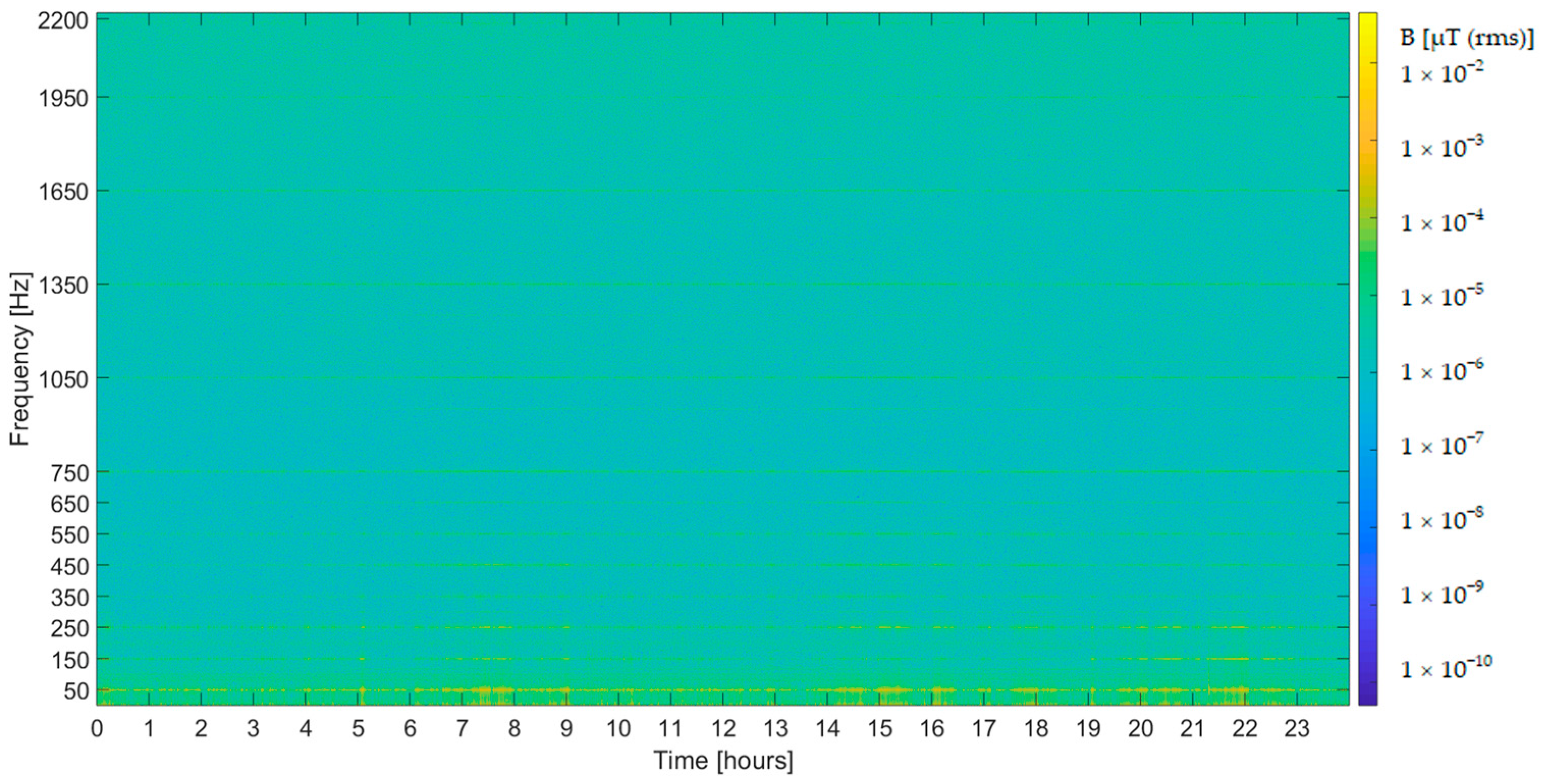
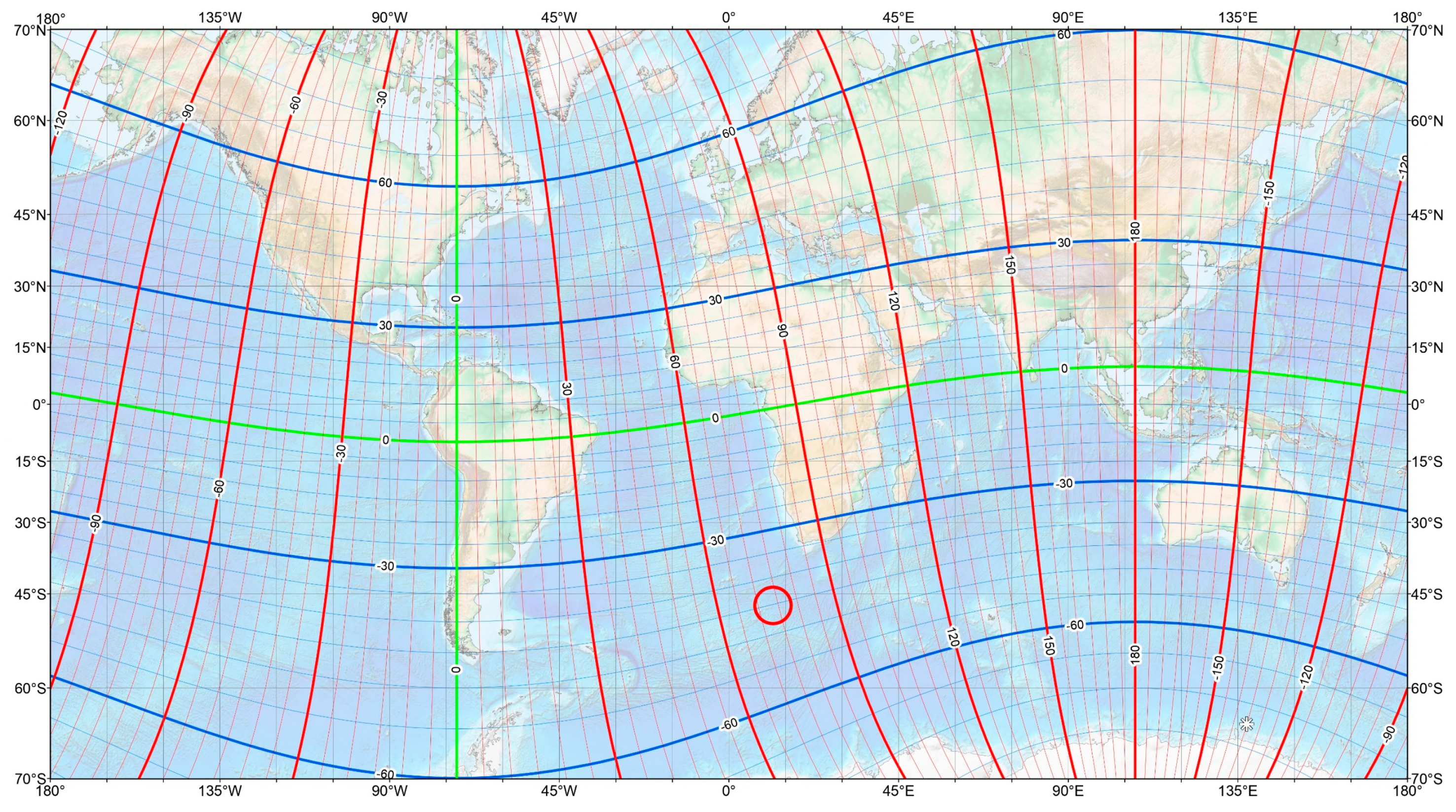
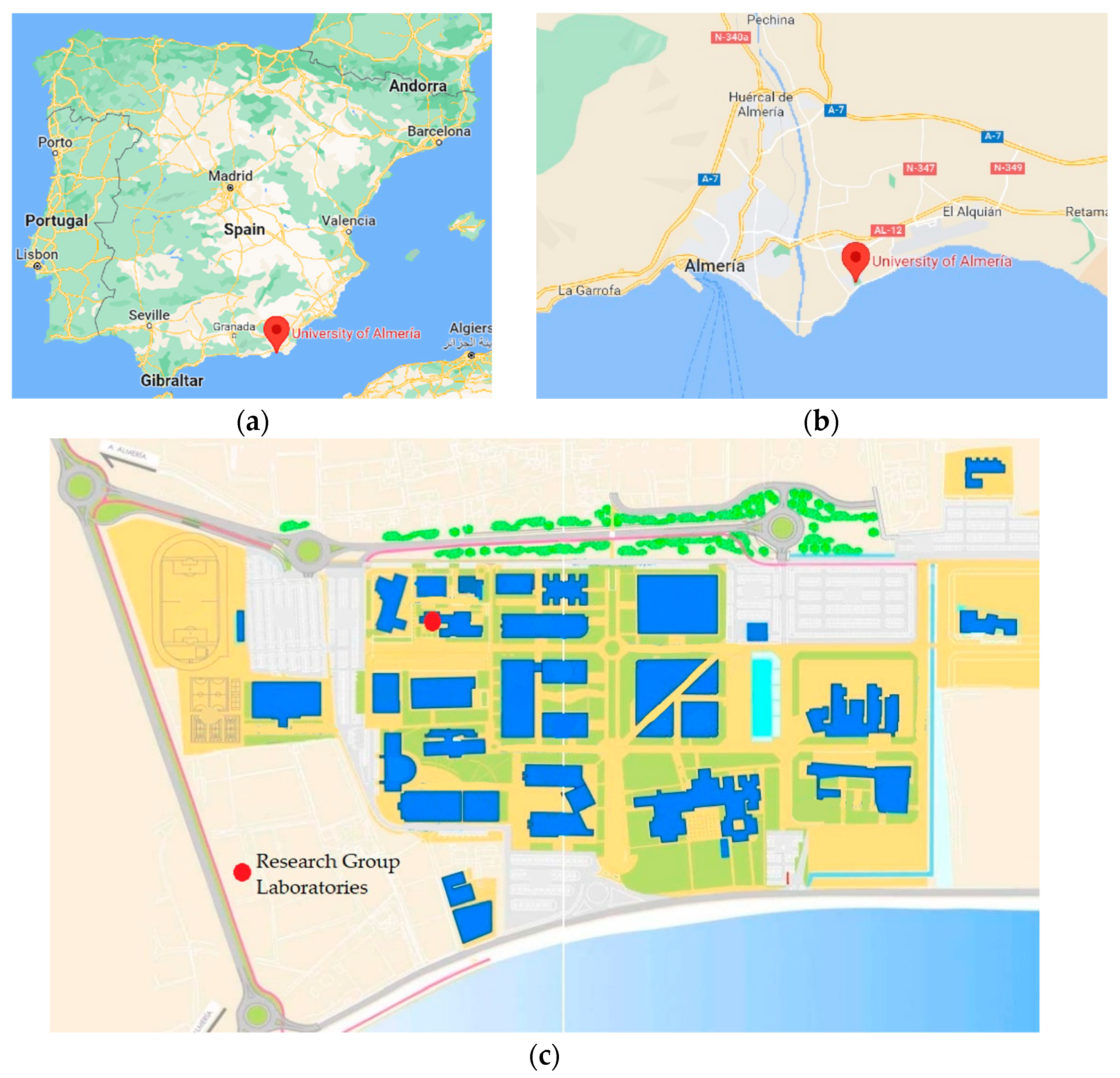

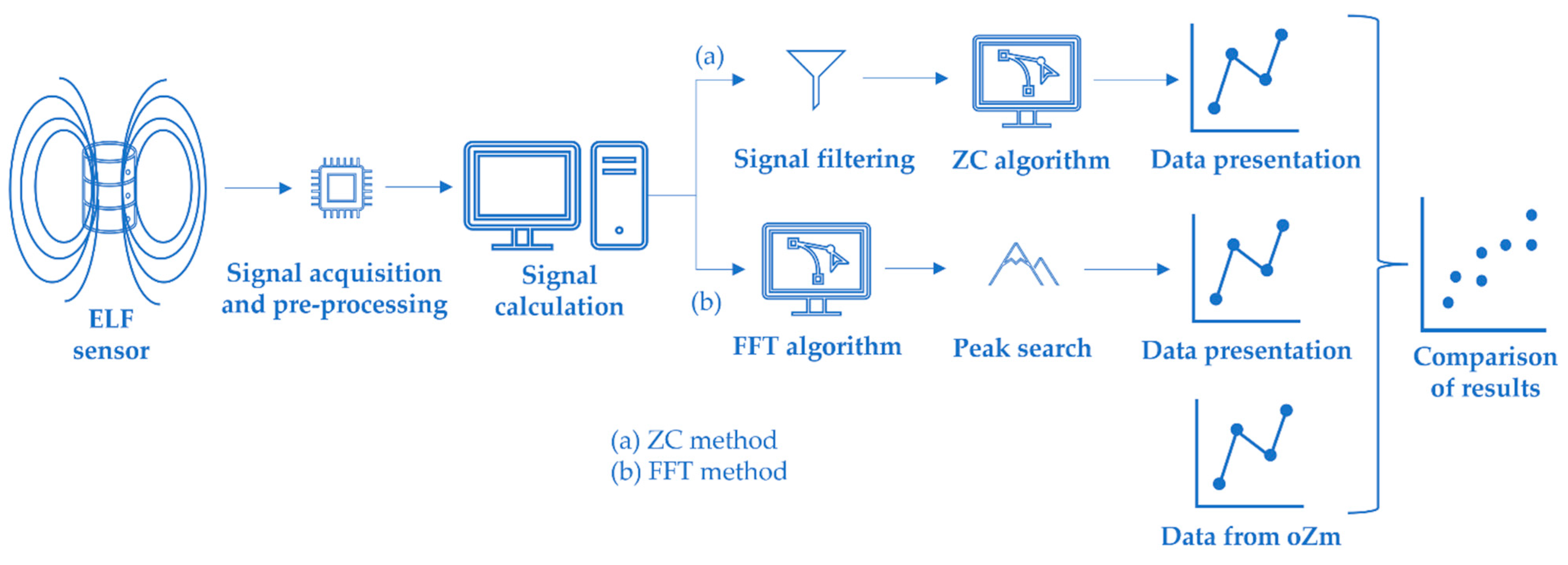
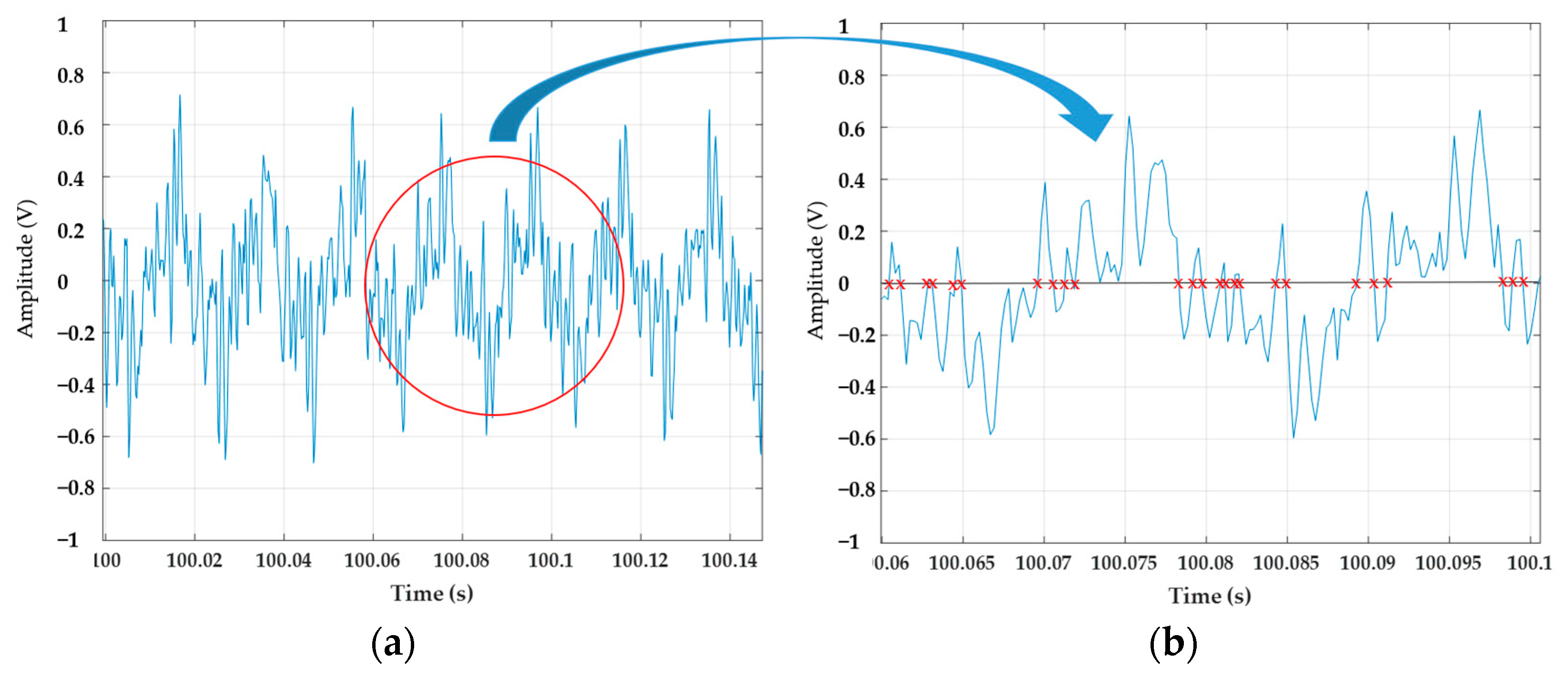
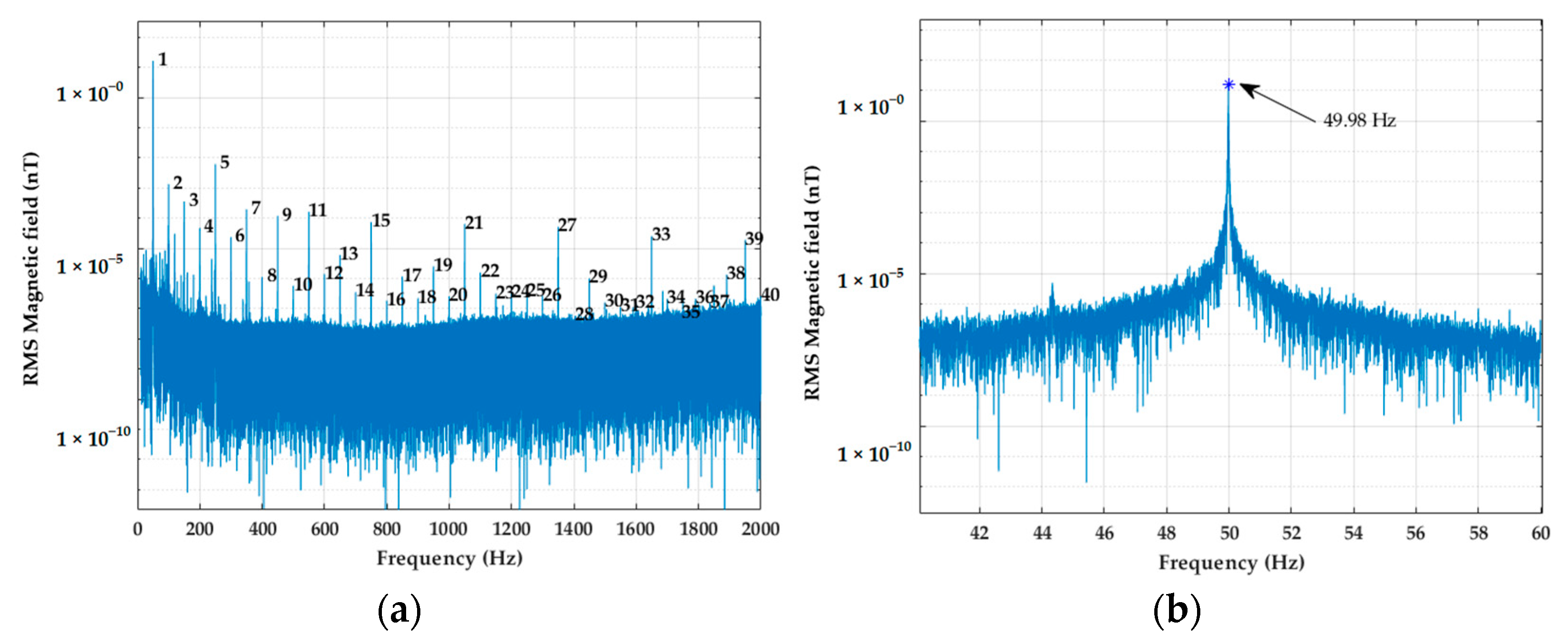
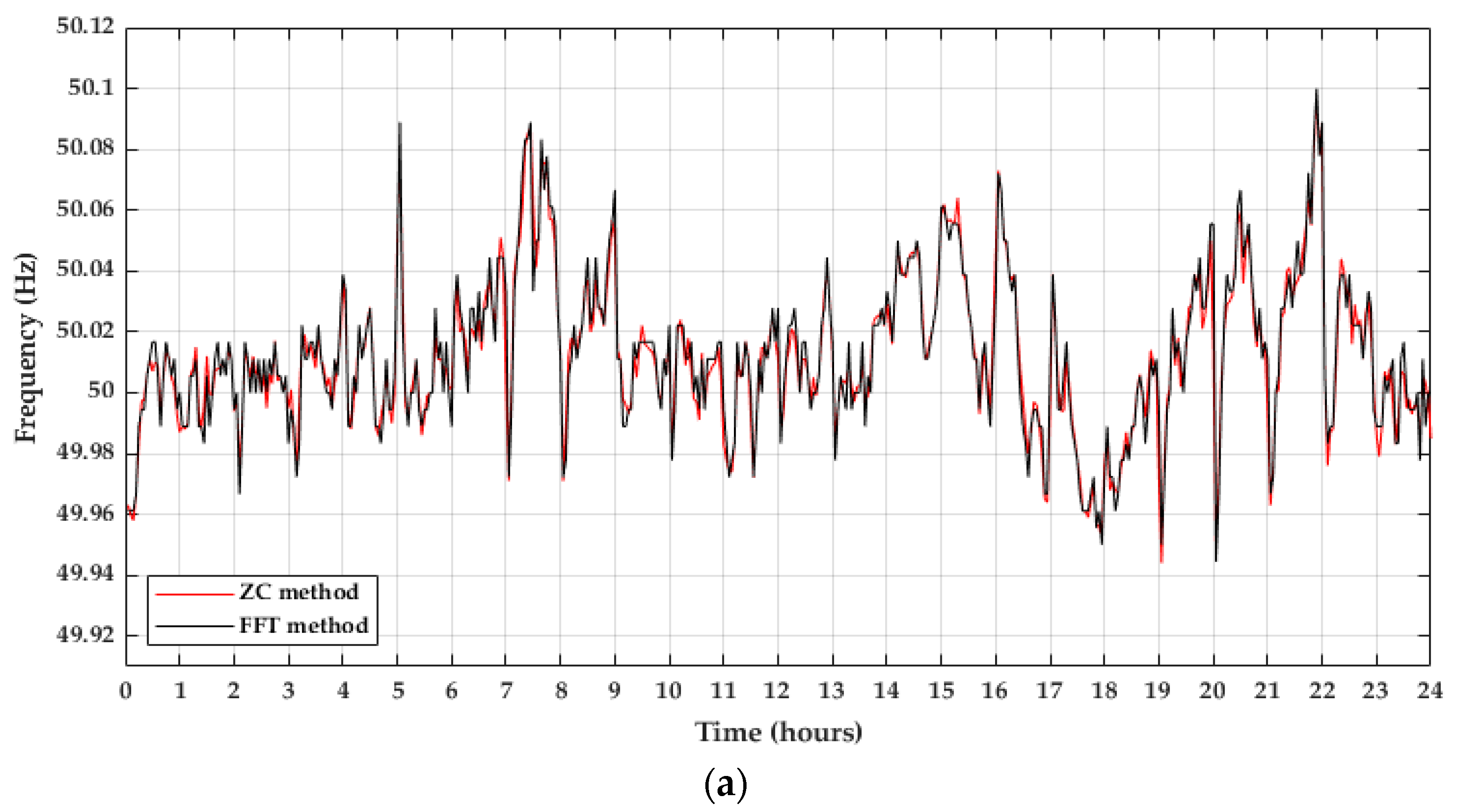
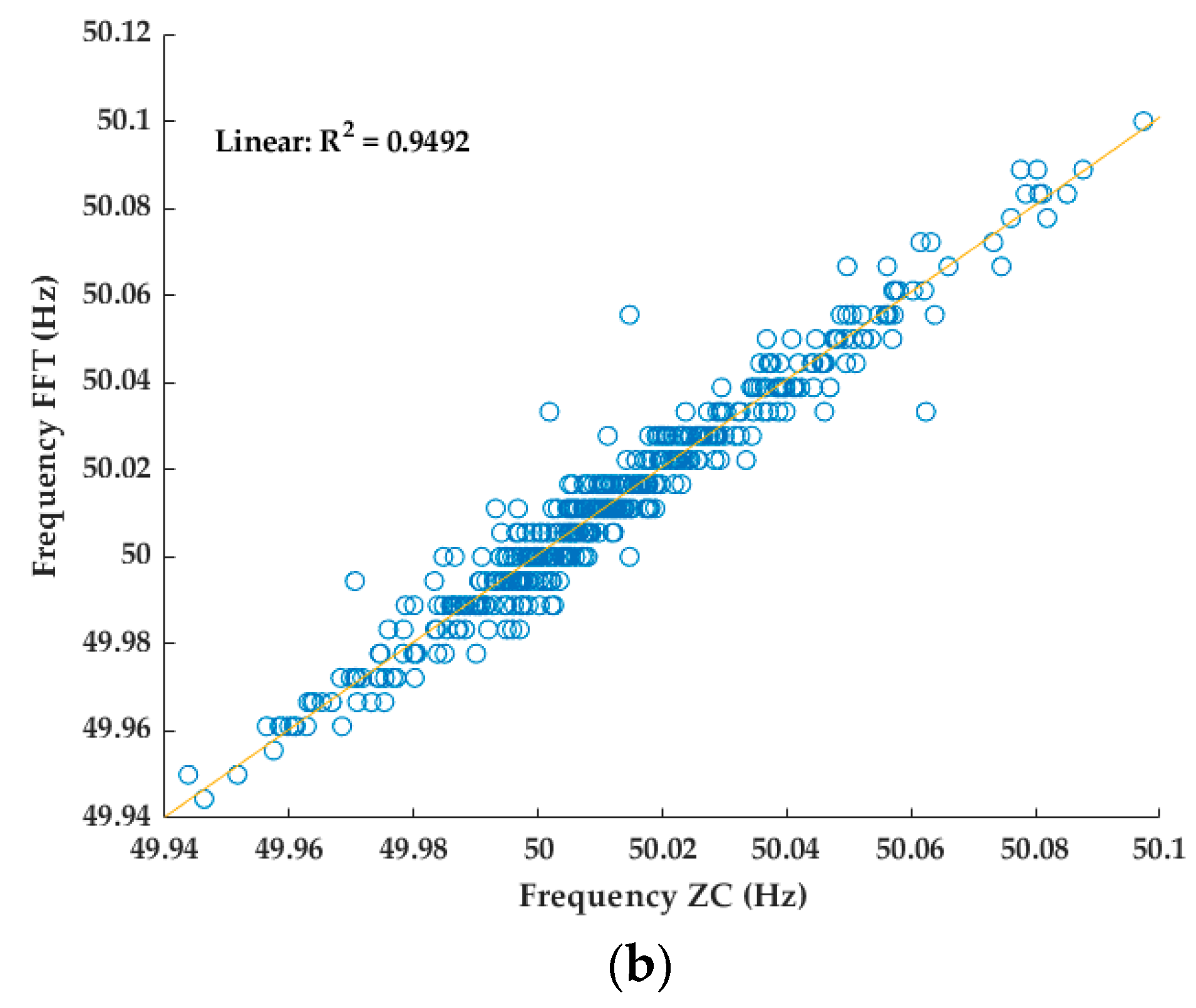

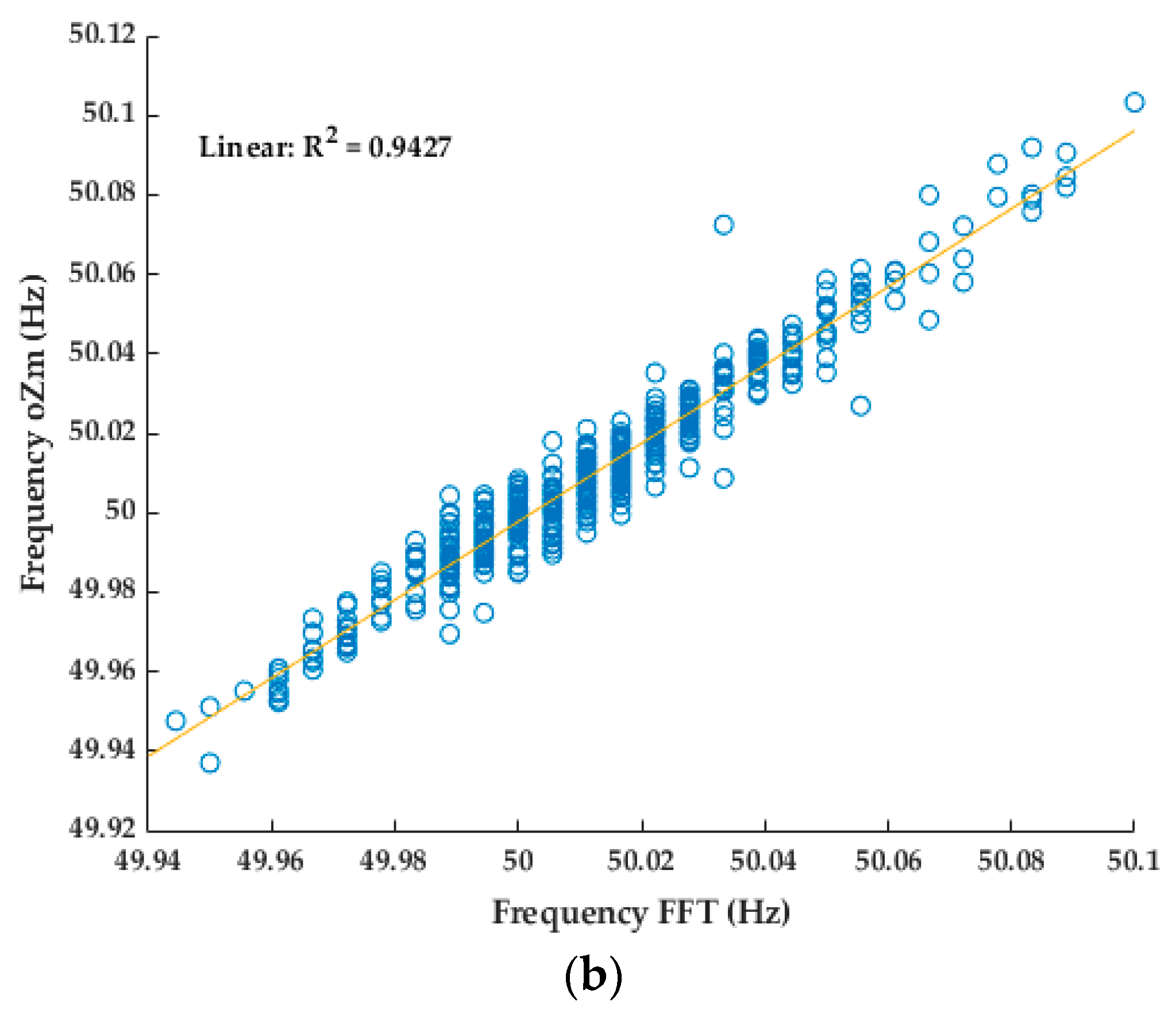
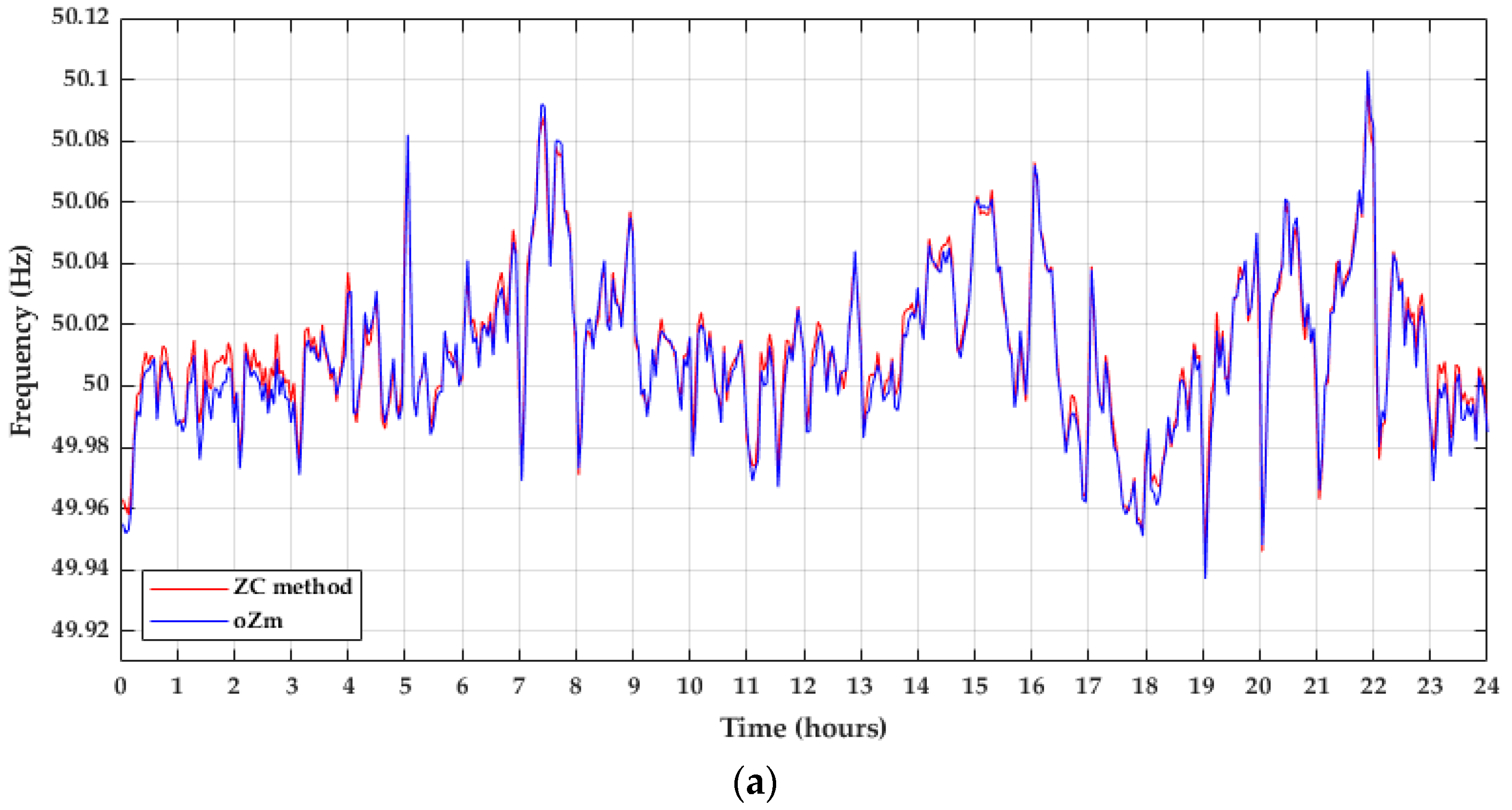

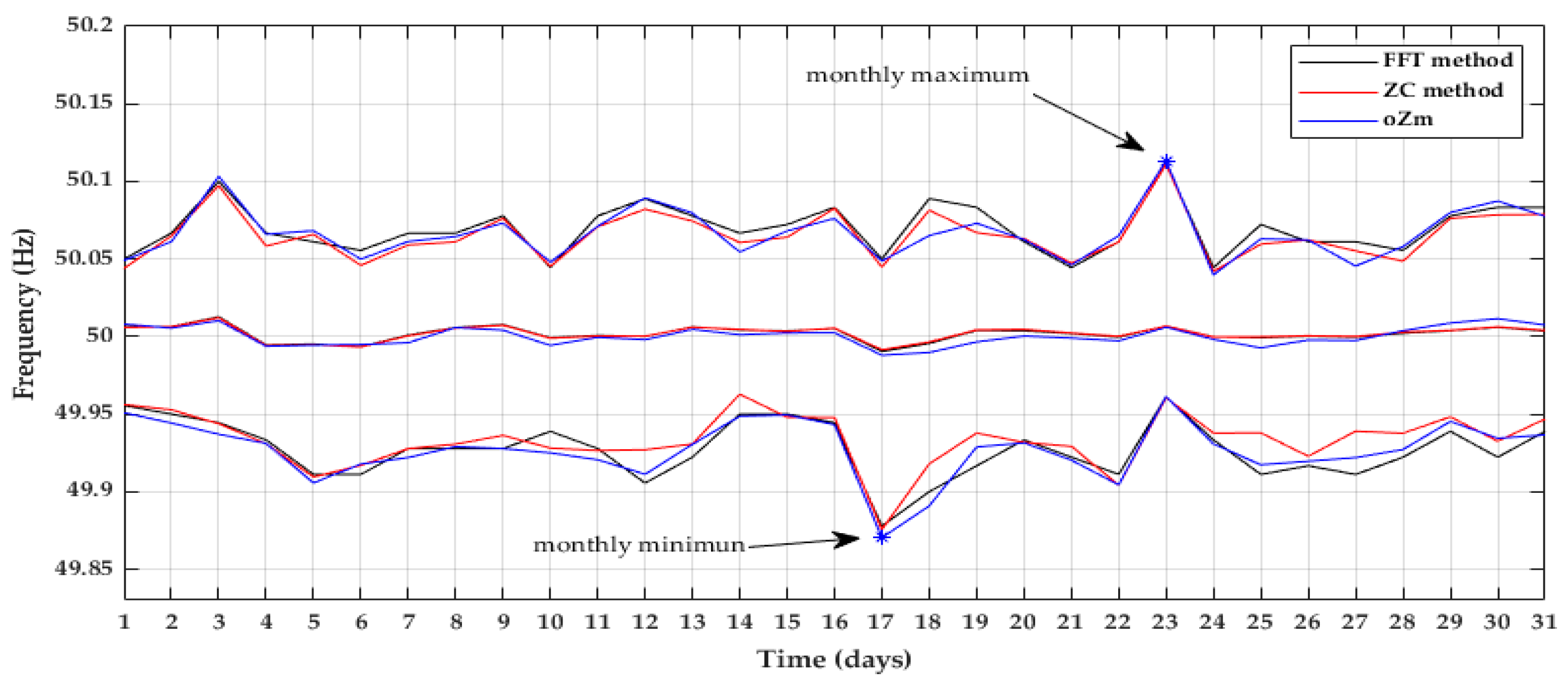
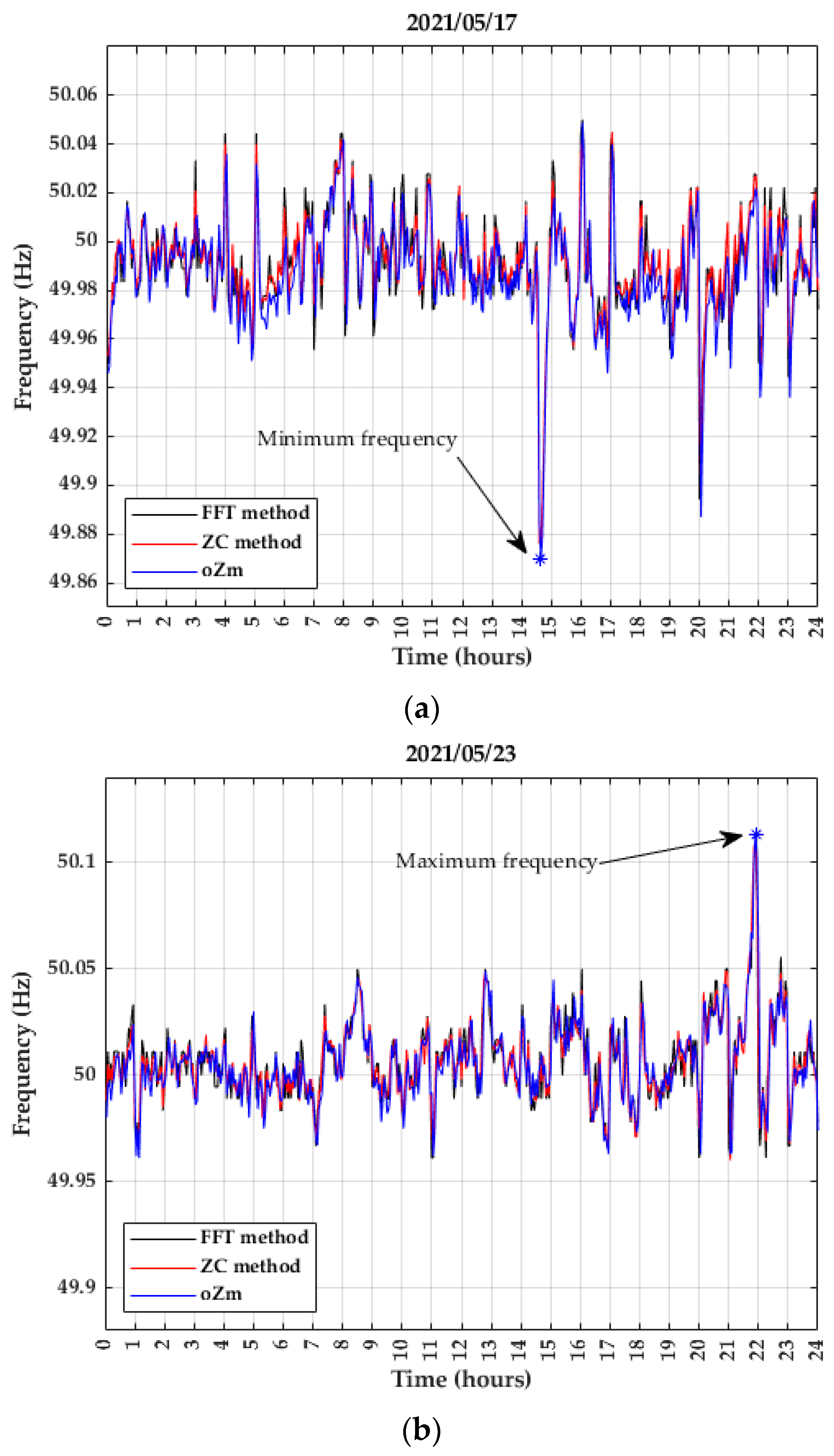
| Day | 1 | 2 | 3 | 4 | 5 | 6 | 7 | 8 | 9 | 10 | 11 | 12 | 13 | 14 | 15 | 16 |
| ZC vs. oZm | 0.9587 | 0.9185 | 0.9801 | 0.9560 | 0.9626 | 0.9377 | 0.9532 | 0.9436 | 0.9414 | 0.9855 | 0.9311 | 0.9145 | 0.7207 | 0.8630 | 0.8920 | 0.8846 |
| FFT vs. oZm | 0.8787 | 0.8280 | 0.9427 | 0.8963 | 0.8992 | 0.8651 | 0.8735 | 0.8689 | 0.8799 | 0.8110 | 0.8409 | 0.8083 | 0.6521 | 0.6817 | 0.7748 | 0.7686 |
| 17 | 18 | 19 | 20 | 21 | 22 | 23 | 24 | 25 | 26 | 27 | 28 | 29 | 30 | 31 | ||
| ZC vs. oZm | 0.8763 | 0.8785 | 0.8323 | 0.8698 | 0.8208 | 0.8048 | 0.8702 | 0.8310 | 0.6495 | 0.7177 | 0.7109 | 0.7367 | 0.7577 | 0.8089 | 0.7713 | |
| FFT vs. oZm | 0.7767 | 0.7602 | 0.6714 | 0.7432 | 0.6833 | 0.6694 | 0.7663 | 0.7180 | 0.5304 | 0.6413 | 0.5717 | 0.6307 | 0.6499 | 0.7085 | 0.6454 |
Publisher’s Note: MDPI stays neutral with regard to jurisdictional claims in published maps and institutional affiliations. |
© 2022 by the authors. Licensee MDPI, Basel, Switzerland. This article is an open access article distributed under the terms and conditions of the Creative Commons Attribution (CC BY) license (https://creativecommons.org/licenses/by/4.0/).
Share and Cite
Portillo, F.; Alcayde, A.; García, R.M.; Novas, N.; Gázquez, J.A.; Férnadez-Ros, M. Grid Frequency Measurement through a PLHR Analysis Obtained from an ELF Magnetometer. Sensors 2022, 22, 2954. https://doi.org/10.3390/s22082954
Portillo F, Alcayde A, García RM, Novas N, Gázquez JA, Férnadez-Ros M. Grid Frequency Measurement through a PLHR Analysis Obtained from an ELF Magnetometer. Sensors. 2022; 22(8):2954. https://doi.org/10.3390/s22082954
Chicago/Turabian StylePortillo, Francisco, Alfredo Alcayde, Rosa M. García, Nuria Novas, José Antonio Gázquez, and Manuel Férnadez-Ros. 2022. "Grid Frequency Measurement through a PLHR Analysis Obtained from an ELF Magnetometer" Sensors 22, no. 8: 2954. https://doi.org/10.3390/s22082954
APA StylePortillo, F., Alcayde, A., García, R. M., Novas, N., Gázquez, J. A., & Férnadez-Ros, M. (2022). Grid Frequency Measurement through a PLHR Analysis Obtained from an ELF Magnetometer. Sensors, 22(8), 2954. https://doi.org/10.3390/s22082954










